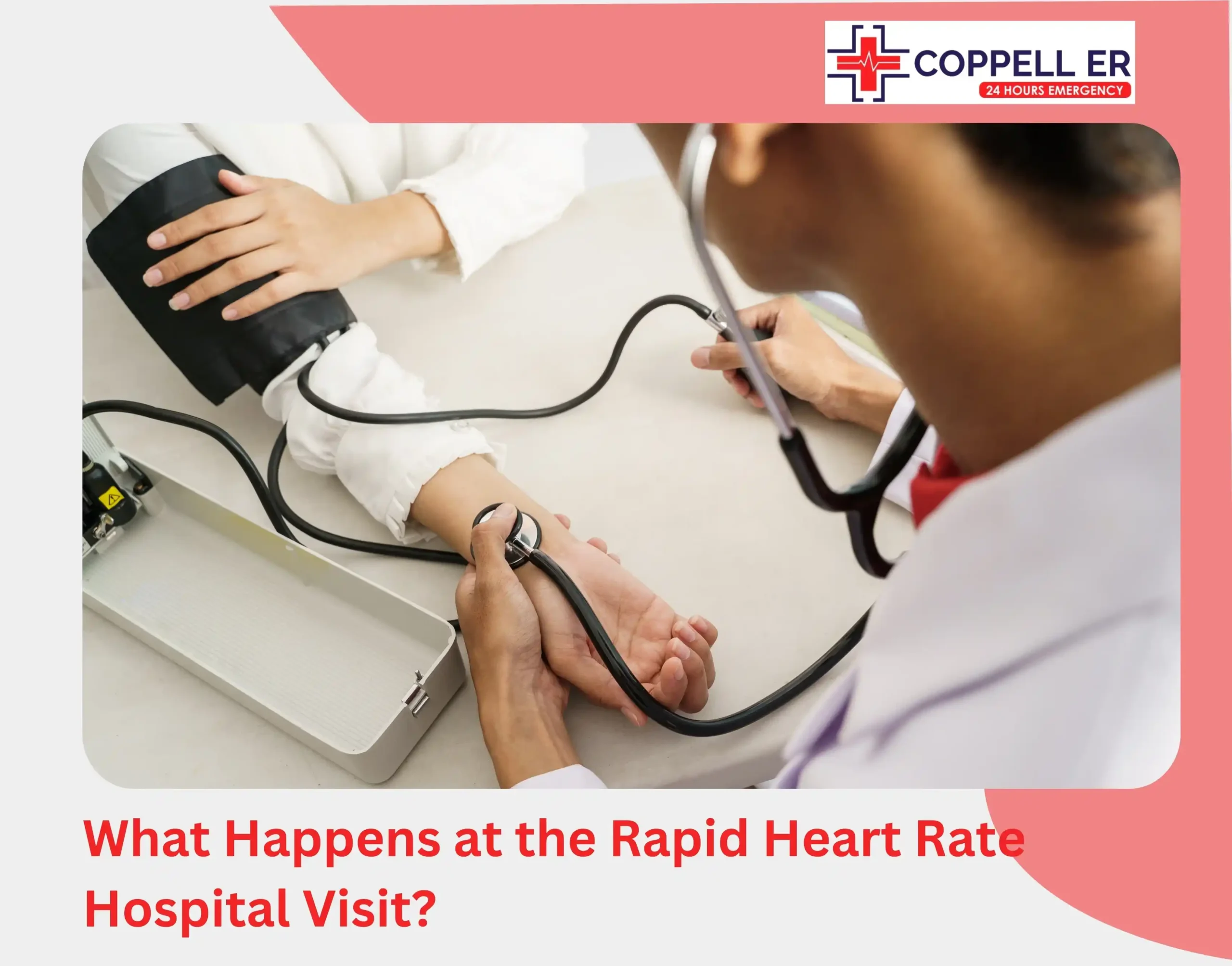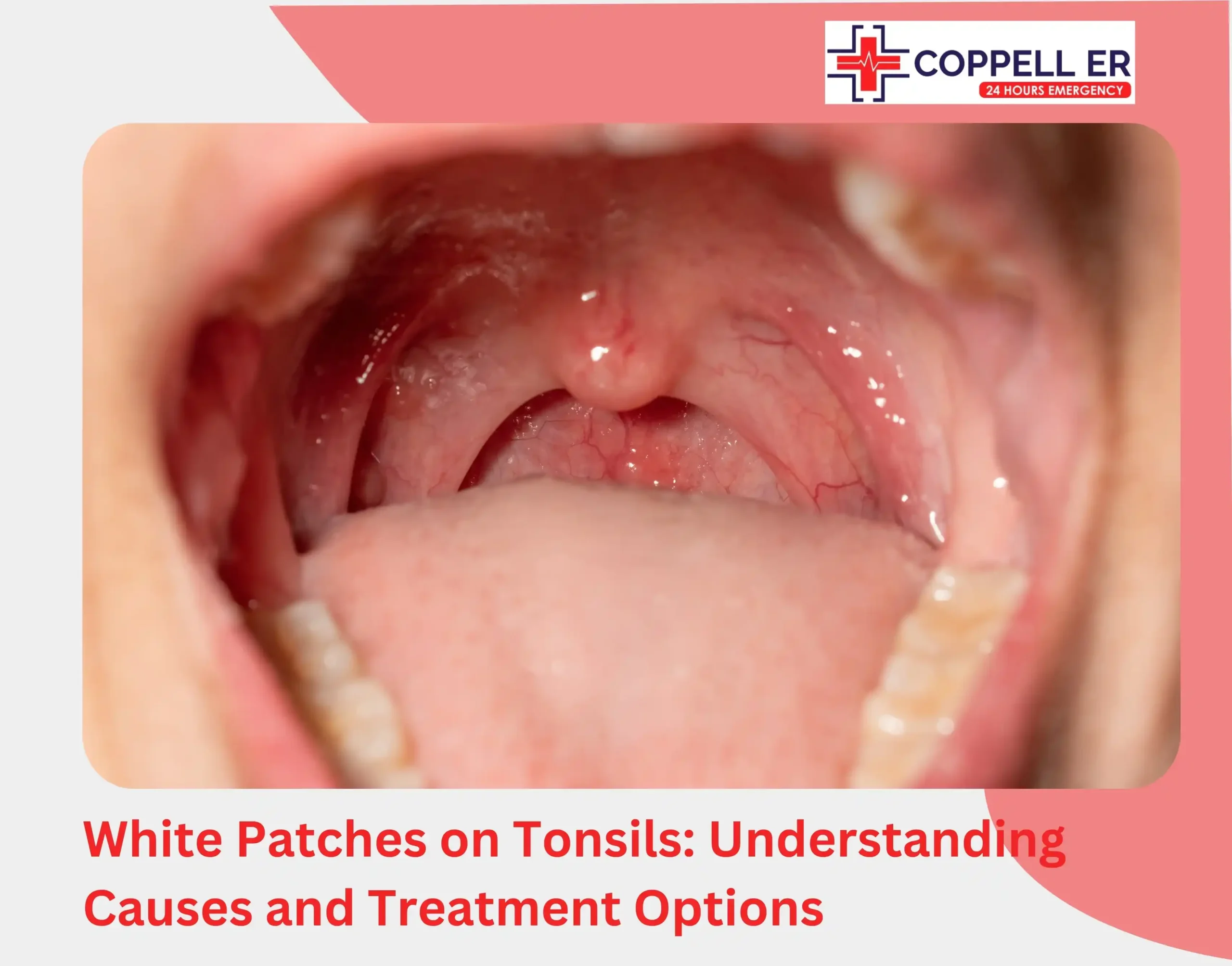Not every fast heartbeat is harmless, some can be deadly. If it occurs for a clear, temporary reason, such as exercise or excitement, and resolves on its own, it’s usually nothing to worry about.
But if it starts suddenly without a clear cause or accompanied by other symptoms, it’s dangerous. Such a condition prevents the heart from pumping blood efficiently, and that lack of proper circulation can trigger stroke, organ failure, or cardiac arrest.
So it’s crucial to recognize the warning signs and understand when a rapid heart rate hospital visit becomes necessary. Making a timely hospital visit can be life-saving.
What Is Considered a Rapid Heart Rate or Tachycardia?

A normal resting heart rate for most adults is between 60 and 100 beats per minute (bpm). Anything consistently above 100 bpm while resting is considered tachycardia.
Occasional heart palpitations (the feeling of your heart fluttering, pounding, or skipping beats) are also common. But frequent or prolonged episodes should not be ignored. In some cases, heart rates above 120–150 bpm at rest are concerning and require prompt evaluation.
Common Causes of a Rapid Heart
Not all rapid heart rates mean danger. Some common temporary causes include:
- Physical activity or exercise
- Stress, anxiety, or panic attacks
- Caffeine, nicotine, or alcohol
- Fever or dehydration
- Certain medications or stimulants
If the heart rate slows back to normal after the trigger is removed and no other symptoms appear, it may not be a cause for alarm. However, repeated or prolonged episodes should still be discussed with a doctor.
Serious Causes of a Rapid Heart
Tachycardia can also be linked to more serious underlying medical conditions, such as:
- Heart disease or heart rhythm disorders (arrhythmias)
- Overactive thyroid (hyperthyroidism)
- Anemia
- Lung conditions like COPD or pulmonary embolism
- Electrolyte imbalances
Warning Signs That Require Hospital Care
Rapid heart rate hospital visit becomes crucial if accompanied by any of these symptoms:
- Chest pain or pressure: Could indicate a heart attack or reduced blood flow to the heart muscle.
- Shortness of breath: Suggests the heart isn’t pumping effectively or fluid is building up in the lungs.
- Dizziness or fainting: May mean the brain is not receiving enough oxygen.
- Sweating or nausea: Classic signs of a heart attack or unstable rhythm.
- Confusion or trouble concentrating: Low blood flow to the brain can cause mental changes.
- Weakness or fatigue: Usually means the heart isn’t pumping efficiently enough to deliver oxygen-rich blood to the body.
These may indicate a heart attack, arrhythmia, or another dangerous condition that requires urgent hospital care.
Rapid Heart Rate Hospital Visit
Seek emergency medical attention if:
- Your resting heart rate stays above 120–150 bpm and does not slow down.
- Your rapid heartbeat starts suddenly and does not stop within a few minutes.
- You have a history of heart disease or arrhythmias and experience palpitations.
- You develop chest pain, fainting, or severe shortness of breath.
When in doubt, it is always safer to get evaluated in the hospital for a rapid heart rate.
What Happens at the Rapid Heart Rate Hospital Visit?

At the hospital, doctors may perform tests and treatments such as:
- Checking vital signs and performing an electrocardiogram (EKG/ECG) to analyze heart rhythm
- Blood tests to check thyroid function, anemia, or electrolyte imbalances
- Imaging tests like chest X-rays or echocardiograms
- Providing medications to slow your heart rate or restore normal rhythm
- IV fluids if dehydration is contributing to the issue
- In severe cases, procedures such as cardioversion (a mild electrical shock to reset the rhythm).
Preventing Rapid Heart Rate Episodes

While some causes of tachycardia are medical, many episodes can be reduced by lifestyle changes:
- Stay hydrated and limit caffeine or alcohol
- Manage stress with relaxation techniques like deep breathing or yoga
- Exercise regularly to keep your heart healthy
- Take prescribed medications consistently
- Get regular checkups, especially if you have high blood pressure, diabetes, or other risk factors
Final Thoughts
A fast heartbeat isn’t always dangerous, but knowing when it becomes an emergency is crucial. If your rapid heart rate comes with chest pain, fainting, or severe shortness of breath, seek hospital care immediately. Prompt rapid heart rate hospital treatment can prevent complications and save your life.
At Coppell ER, you’ll receive expert care to restore your heart’s rhythm, 24/7, day or night. Our staff ensures patients and families are supported and informed every step of the way. The safest rule of thumb: If in doubt, go to the hospital.




